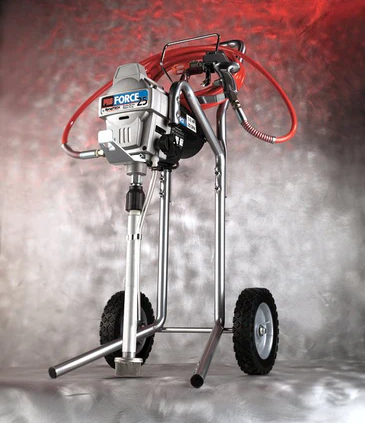Professional-Quality Walls: The Key Role of Texture Sprayers
The right tools make all the difference when it comes to achieving a flawless finish on your walls. Wagner texture sprayers offer a smart and efficient way for homeowners, contractors, and DIY enthusiasts alike to create high-quality, professional-grade results.
These machines aren’t just for large-scale projects—they’re ideal for big renovations and smaller decorative upgrades.
In this article, we’ll explore how Wagner texture sprayers elevate wall finishing and why they are a go-to solution for anyone seeking perfect walls with minimal effort.
Understanding Wall Texturing
What Is Wall Texturing?
Wall texturing is the process of adding depth, character, and visual interest to plain walls. Texture also helps hide imperfections like cracks, nail holes, or uneven drywall seams. Common types include knockdown, orange peel, and popcorn finishes. These styles give walls a more dimensional look and are often used in both residential and commercial settings.
Why Texture Matters
Texture doesn’t just enhance aesthetics. It also provides functional benefits like improved durability and better sound absorption. When applied correctly, textured walls can stand up to daily wear and tear and are easier to maintain over time.
Benefits
1. Efficiency and Speed
Time is a critical factor in any renovation project. Wagner texture sprayers are designed to cover large surfaces quickly and evenly. Instead of applying texture manually with a brush or roller, the sprayer disperses material across the wall with consistent pressure. This cuts your application time by half—or even more—depending on the job size.
Whether you’re finishing one wall or an entire home, Wagner sprayers help you move faster without sacrificing quality.
2. Even and Professional Finish
Manual application often leads to inconsistent results. With Wagner texture sprayer, you can achieve a uniform coat every time. The sprayers distribute the material smoothly, preventing clumps, uneven patches, or streaks.
This level of control is especially useful for intricate patterns or multi-layered designs. The result? A polished, professional appearance that stands out.
3. Ease of Use for All Skill Levels
Wagner designs its sprayers with user-friendliness in mind. Whether you’re a beginner or a seasoned contractor, the controls are intuitive and easy to master. Adjustable flow settings, comfortable grips, and lightweight designs make the process less intimidating and more manageable.
Plus, most Wagner models come with detailed instructions, quick-start guides, and video tutorials to help you get started right away.
Types of Texture Sprayers
Hopper Sprayers
These sprayers are ideal for heavier materials like drywall mud or thicker textures. They use air pressure to spray material from a hopper-style container, which sits above the sprayer and feeds the product downward.
Perfect for: Knockdown, popcorn, and orange peel textures.
Airless Texture Sprayers
Airless models pump material through a hose and nozzle at high pressure. These are great for larger-scale jobs that require more speed and power. Airless sprayers can handle both paint and texture materials, giving you flexibility in one tool.
Perfect for: Commercial jobs, full-home renovations, and high-traffic areas.
Preparing for Texture Application
Surface Preparation
Before spraying texture, the wall must be clean and dry. Remove dust, debris, or old wallpaper. Repair any holes or cracks and apply a primer if needed. This step ensures proper adhesion and a long-lasting finish.
Choosing the Right Texture
Your design goals will determine the texture style you need. For a subtle, modern look, go with orange peel. For a more dramatic effect, try knockdown. Make sure to test the texture on a scrap surface or small wall section first. This helps you get a feel for the spray pattern and adjust settings as needed.
Step-by-Step: Using a Texture Sprayer
- Mix Your Texture Material
Follow the manufacturer’s guidelines to get the right consistency. Most texture mixes need to be thinned slightly to work well with the sprayer. - Fill the Hopper or Container
Load the texture material carefully. Do not overfill, as it can lead to spills or uneven application. - Adjust the Spray Settings
Choose the right nozzle and flow rate. Start with a low pressure and gradually increase until you find the sweet spot. - Test the Spray Pattern
Spray a test section on cardboard or a wall patch. This allows you to fine-tune the pressure and nozzle settings. - Apply in Controlled Passes
Begin spraying in horizontal or vertical passes, holding the sprayer at a consistent distance from the wall. Avoid overlapping too much to prevent buildup. - Let It Dry and Finish
Allow the texture to dry according to the product instructions. For knockdown textures, lightly flatten the peaks with a knockdown knife before the material sets.
Maintenance and Cleanup
Wagner sprayers are built for easy cleaning. Disassemble the parts and rinse them thoroughly with water or the recommended cleaning solution. Keeping your sprayer clean extends its lifespan and ensures optimal performance for future projects.
Make sure to remove all residue from nozzles and hoses to prevent clogging. Store the sprayer in a cool, dry place once cleaned.
Final Thoughts
Wagner texture sprayers are more than just tools—they’re game changers. They help you achieve consistent, high-quality wall finishes with minimal time and effort. Whether you’re looking to update one room or transform an entire property, these sprayers deliver results that rival professional work.
From ease of use to flawless finishes, Wagner sprayers make wall texturing efficient, creative, and satisfying. If you want professional-quality walls without hiring a crew, investing in a Wagner texture sprayer is a smart, lasting decision.



Leave a Reply
Want to join the discussion?Feel free to contribute!